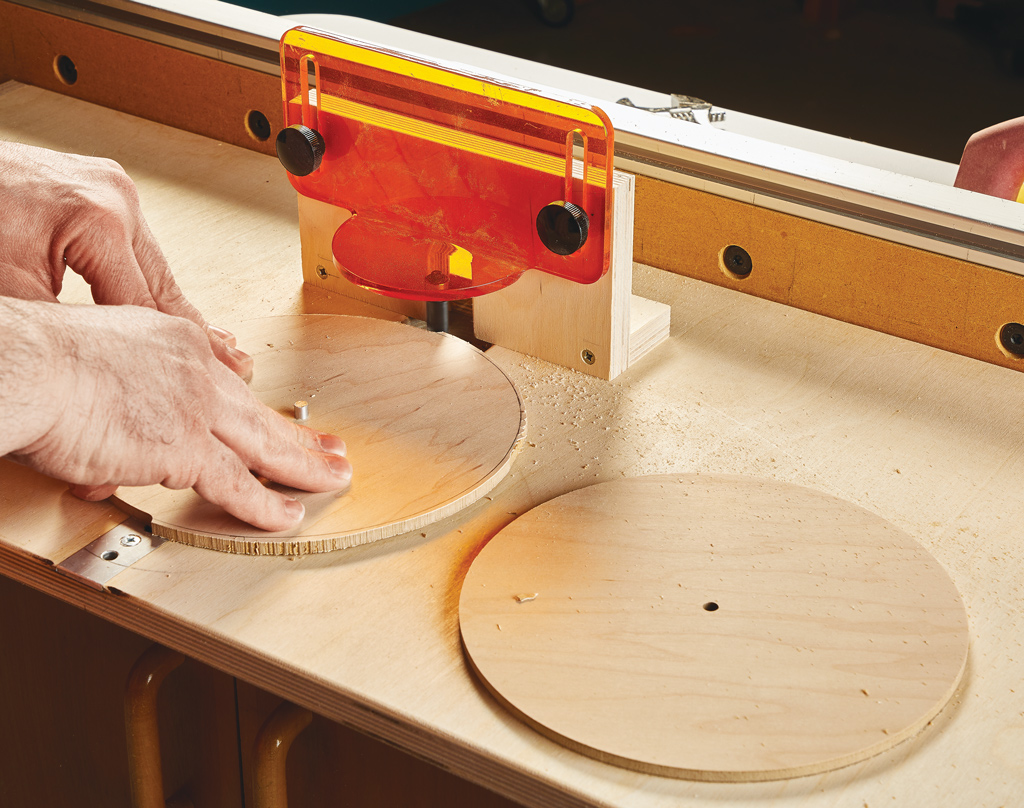
The trend in power tools usually runs uphill to bigger and more powerful models. So it’s a little ironic that the latest thing in routers has taken the opposite course.
From laminate trimmer to trim router to palm router, the popularity of small-bodied routers has soared with woodworkers. In fact, they’re among the hottest-selling tools today. As a result, several major tool manufacturers have developed new, small routers. The new multi-base router kits jointly developed by Porter-Cable and DeWalt continue the evolution of these handy tools.

WHY A COMPACT? Since buying a palm router, I can honestly say it sees more action than my fullsized routers. The reason is simple. It’s quicker and more convenient to set up and use than a big router. And I find that the lower power is rarely an issue. Although these routers won’t accept 1 ⁄ 2 "-shank bits, you’ll find just about every profile you need is available in a 1 ⁄ 4 " shank.
WHAT’S NEW? The Porter-Cable 450PK and DeWalt 611PK kits are nearly identical. Both have a 1 1 ⁄ 4 -hp motor with soft start and electronic feedback to keep the RPMs up under load. (The DeWalt 611 even includes a variablespeed control motor.) They’ve also added a very well-designed plunge base — a first for this class of router. These features take them to the next level of performance.
This new breed is simply called a compact router. And frankly, this is the name that makes the most sense. These are full-featured routers, capable of handling most of your common routing tasks.

DEPTH ADJUSTMENT & LOCK. The Porter-Cable and DeWalt routers feature a cam lock with an adjustable clip that you can set by tightening a hex screw. After releasing the lock, adjusting the bit depth is pretty straightforward. On the fixed base, simply turn the adjustment ring (second photo from bottom). After installing a bit and zeroing out the depth on the fine-adjustment ring shown in the inset photo, you can dial in a precise depth of cut.
When in the plunge base, the plunge-lock lever offers smooth movement (second photo from top). The left photo below shows how the depth adjustment relies on a standard turret-style stop. You can even make micro-adjustments by turning the knurled knob on the depth stop rod. The rod has a cursor on the scale to keep track of even minor changes in bit depth.

GUIDE BUSHINGS. Another thing I like about these routers is the fact that the bases accept standard-size guide bushings. These routers are great for pattern and inlay work, so I believe this is a must-have feature. Too many other compact routers ignore this application. You won’t need to buy an after-market base plate or special adaptor to take advantage of this handy capability.

CLEAR BASE. When it comes to intricate work, I really want a clear base. It makes it easier to see your layout marks if you’re routing something like a hinge mortise. Both routers have clear, polycarbonate bases. And the DeWalt includes a pair of LEDs that light up the work nicely for great visibility even in tight, dusty spaces.


SWAPPING BASES. If you’ve ever fought with the too-tight fit of most multi-base routers, then you’re sure to appreciate how easy it is to swap bases on these models. Both have quick-release tabs on the motor that allow you to remove it with ease. The second photo above shows a tab on the Porter-Cable. To insert the motor in either base, all you need to do is line up a single pin in the base with a groove in the motor and slide it in place. This is the best design for changing bases I’ve seen on any router, large or small.
SPINDLE LOCK. Since the motor is so easy to remove, a spindle lock button makes single-wrench bit changes a breeze. The center photo below shows what I mean.
CONVENIENT BAG. A canvas bag easily holds everything. These bags are a big improvement over molded plastic cases.
BOTTOM LINE. DeWalt and Porter-Cable have done an amazing job designing these routers. From the ergonomic grips to the smooth travel of the plunge base, you can immediately tell that you’re holding a high-quality tool.
The price tag may be enough to put off some woodworkers. But to me, they’re well worth the cost. My only gripe is that I wish a dust collection port and edge guide were included. They’re available separately.
With a larger router mounted in a table, a compact might be all you need for the hand-held applications in your shop.












